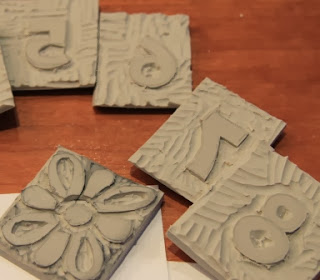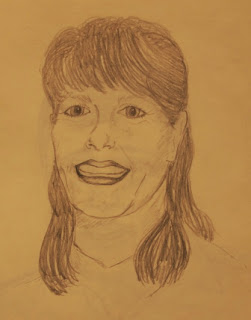Images can be carved into a number of different materials. One is the linoleum which is soft enough to carve into but still rigid enough to ink and print larger images. Another is a very soft rubber that comes in sheets. This is easy to carve but also much easier to make a mistake in if your carving tool slips and if you try to make a larger image, it is quite floppy and hard to print. The rubber is easy to cut into smaller sizes for smaller stamps. I've also made tiny stamps out of wine bottle corks which are perfect to use with a stamp pad.
This week when I was working in a journal, I wanted to stamp the year on a page, so I carved myself a set of numbers from the rubber. When doing numbers or letters, I have to remember to carve them backwards so when they are printed they come out the right way.
When the numbers worked out well, I decided to try some other designs to use in my journals. One was a flower design as above and the other a swirl design. I have lots of rubber left over. Any suggestions as to what I should carve next?


















